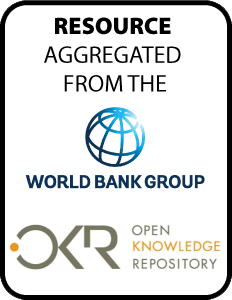Resource information
Many developing countries display
remarkably high degrees of urban concentration that are
incommensurate with their levels of urbanization. The cost
of excessively high levels of urban concentration can be
very high in terms of overpopulation, congestion, and
productivity growth. One strand of the theoretical
literature suggests that such high levels of concentration
may be the result of restrictive trade policies that trigger
forces of agglomeration. Another strand of the literature,
however, points out that trade liberalization itself may
exacerbate urban concentration by favoring the further
growth of those large urban centers that have better access
to international markets. The empirical basis for judging
this question has been weak so far; in the existing
literature, trade policies are poorly measured (or are not
measured, as when trade volumes are used spuriously). Here,
new disaggregated tariff measures are used to empirically
test the hypothesis. A treatment-and-control analysis of
pre- versus post-liberalization performance of the cities is
also employed in liberalizing and non-liberalizing
countries. It is found that (controlling for the largest
cities that have ports and, thus, have better access to
external markets) liberalizing trade leads to a reduction in
urban concentration.


